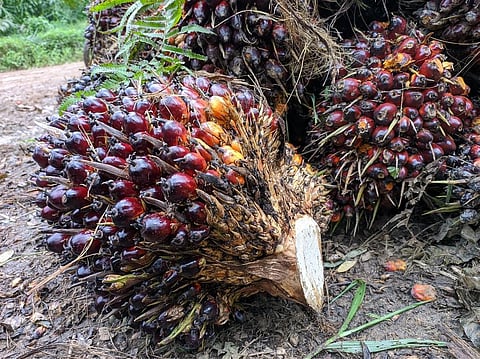Oil palm plantations proved to be a disaster in Mizoram — is Assam next?
On August 8, 2023, Assam Chief Minister Himanta Biswa Sarma announced that the state government had initiated a large-scale oil palm plantation project in partnership with Patanjali Food Limited (PFL).
The ambitious project is an initiative to achieve Prime Minister Narendra Modi’s goal of self-sufficiency in edible oil production. The venture will bring 370,000 hectares of land under monoculture plantation, according to the announcement.
Ramdev, the founder of PFL, announced plans to establish 16 nurseries in Assam by next year. Of these, 12 are scheduled to be set up across the seven districts in the current year and the remaining four in the next year for facilitating the supply of high-quality seed to farmers.
What’s the concern?
GREEN, a 2009 documentary by Patrick Rouxel, highlighted the impacts of deforestation triggered by oil palm plantations in Indonesia. It focussed on the orangutans of the region. A similar scenario is likely to happen in Northeast India as well.
The Northeast together encompass two global biodiversity hot spots: The Eastern Himalayas and the Indo-Myanmar region. These regions flaunt extensively rich biodiversity in terms of forest tracts, which are home to several threatened and endemic wildlife species as well as medicinal plants.
Oil palm plantations must be strictly prohibited in the region to protect its rich biodiversity.
Assam stands second across the country in terms of national parks. The state houses Manas National Park and Kaziranga National Park, recognised as UNESCO World Heritage Sites. Monoculture plantation projects in the name of development and prosperity should not be planned in regions of such significant biodiversity.
Moreover, despite biodiversity loss, the plantation can permanently deplete the soil. The high absorption rate of valuable nutrients by the new young oil palms degrades the soil fertility, leaving it barren with no further reuse.
The proximity of the trees planted to optimise the use of limited available space further impacts soil quality. Fertilisers and pesticides are frequently used to compensate for the deficiency of nutrients. This brings irreversible damage to the soil, which later on turns into barren land, making it unsuitable for the cultivation of other crops.
Lessons from neighbour
An article published in Frontline magazine on June 2, 2023, highlighted the disastrous impact of oil palm plantations in Mizoram since 2004. The plantations have deteriorated soil fertility and water availability.
Crops were left to rot after harvest due to the lack of infrastructure for transportation and milling. The efforts to replace oil palm with other crops have failed due to soil depletion, making farmers the ultimate losers. The companies involved with oil palm plantations in Mizoram — Patanjali’s Ruchi Soya, Godrej and 3F — showed no accountability.
The state experienced a shift in the land tenure system, according to which the power of managing lands transferred from Gram Panchayats and community-based councils to companies. In this way, the land became locked under the plantation, where the community lost its say in management. This paved the way for farmers to become impoverished, with many compelled to sell their lands.
While Sarma is confident that oil palm plantations will significantly boost agricultural income, most farmers are unaware of the associated risks and consequences of cultivating oil palm and other monoculture crops.
The recently passed amendments to the Forest (Conservation) Act directly facilitated the ambitious plantation drive of oil palms. Earlier, the scientific / dictionary definition of forest was considered in legislating the patchy forests known as deemed forests, ultimately bringing them under protection.
Now, according to the amendment, deemed forests that weren’t under protection according to the Indian Forest Act, 1927, can be used for non-forest activities; thus, nullifying the Supreme Court judgement in TN Godavarman Thirumalpad vs Union of India and others case in 1996.
The amendment in the Act can easily pave way for the clearing of vast forest areas for oil palm plantations. Although the bill acknowledges India’s international commitments and the national target of achieving net-zero emission by 2070, increasing the carbon sink or an additional 2.5-3 billion CO2 equivalent by 2030, and increasing forest cover to a third of the land area, the early signs are not encouraging.
Nabojit Das is senior research fellow at CSIR-Indian Institute of Toxicology Research, Lucknow
Views expressed are the author’s own and don’t necessarily reflect those of Down To Earth


